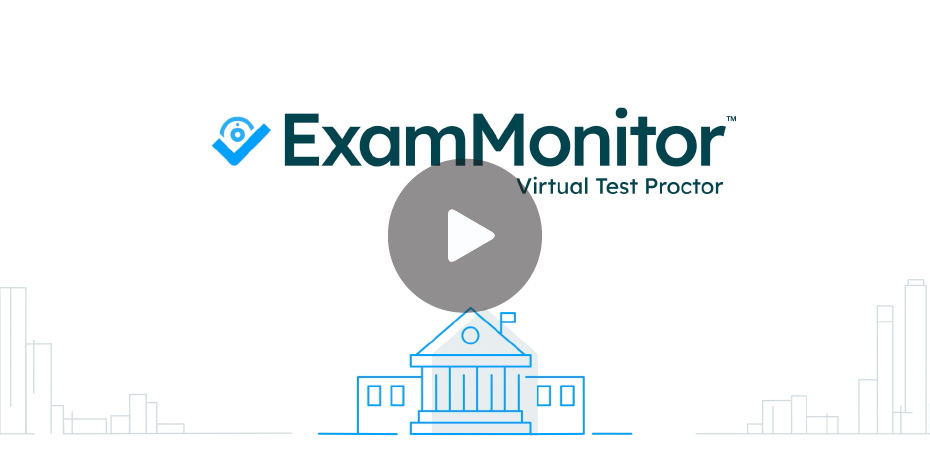Thoughtful, planned online educational experiences are markedly different from the emergency remote teaching that institutions faced in the wake of COVID-19. This makeshift experimental period has been largely unsatisfying for both faculty and students throughout the world. Early, informal surveys from various websites including SurveyMonkey.com and OneClass.com show a general dissatisfaction among students with the remote learning experience they’ve had so far. A survey of faculty and administrators by The Chronicle of Higher Education shows that they, too, have struggled with the sudden transition to distance learning.
Institutions of higher education (IHEs) focused on making a quick transition to complete the Spring semester with a Minimum Viable Product (MVP), the version that gets the basic functions done well enough in the present moment. In an MVP experience, professors end up dedicating an inordinate amount of time to helping students make the transition. Deadlines, course outcomes, and grades sometimes become secondary priorities. The work of developing online-specific pedagogy, integrated academic advising, administrative functions, technology, tutoring, and other components of the true online experience has to wait.
As EDUCAUSE Review notes, the typical planning and development period for a fully online university course is six to nine months. Even under more normal circumstances, there is a learning curve when it comes to teaching an online course for the first time. Faculty often need to teach the course online two or three times before becoming comfortable with the format and available tools.
Many universities may be unable to safely open up campuses in the Fall. There will still be a need for some contingency planning for distance education, or at least a backup plan for remote instruction if a second wave of coronavirus cases hits after September. What we know about successful online education, and the timelines for course development and implementation, can help in developing better online learning solutions in the short term. However, the most effective online learning is the result of careful long-term instructional design and planning, using systematic models for design and development.
Moving Away from Emergency Remote Teaching
In many instances, emergency remote teaching attempts to replicate the classroom experience, with a lesson (synchronous or asynchronous), followed by a discussion (live or in forums), and an assignment. We must remember that the online format enables options that are not possible on campus.
Some faculty believe that online learning is of a lower quality than face-to-face learning, despite research showing otherwise. In fact, the World Economic Forum sees COVID-19 as a potential catalyst that could finally change “centuries-old, lecture-based approaches to teaching, entrenched institutional biases, and outmoded classrooms.” One way to support this transformation is to build faculty support teams consisting of technologists, instructional designers, and subject matter experts who can help guide professors in online course delivery and universal design for learning (UDL) concepts. This type of coaching can help instructors understand the capabilities and deficiencies of the online modality, relative to the on-campus experience. UDL principles focus on the design of online environments that are flexible, accessible, and inclusive to support diverse student needs.
Faculty support teams would ideally have the time and resources to assess the digital fluency of individual instructors and provide customized help in course design, content development, multimedia presentation development, and learning management system (LMS) training. They may also need to work with faculty in developing the soft skills associated with successful online programs. Professors must excel in communication, flexibility, and structure. For example, while students need and want academic rigor and clear assignments and deadlines, they also want to know that accommodations can be made for major life events such as health emergencies or a death in the family. The same balance is struck by professors on campus, but the method of communication is likely different.
Dimensions of Planned Online Education
In an emergency shift like what we saw in Spring 2020, there is no time for careful and deliberate design process and decision making. With a few months of planning, however, so much more is possible.
Systemic models for online course development typically include nine dimensions. Here, we take a brief look at each dimension:
- Modality: This describes whether a program or course is fully online, blended, or web-enabled face-to-face. Evidence-based teaching strategies to achieve specific learning outcomes that can be measured by assessment are used to make this determination.
- Pacing: This refers to whether a course is self-paced with open entry and open exit, class-paced, or a combination of the two.
- Student-instructor ratio: There are advantages to large online “classrooms” as well as small classrooms. In a 1,000 to 1 setting, there are typically more funds to invest in multimedia tools, while in a more intimate 25 to 1 setting, there is more direct interaction between students and professors.
- Pedagogy: This refers to learning experiences that may be expository, practice-oriented, exploratory, or collaborative. Expository is the most passive and traditional, in which the teacher lectures and students take notes. Collaborative places the students in teams, and the professor is typically in a more passive spectator role.
- Instructor role online: This describes whether the instructor is active online, either in lecturing or directing students toward content and engaging in dialogues; has a small presence in which their activity is limited, or has no presence at all during the course.
- Student role online: How will the student engage and in what proportions. Will there be Q&A sessions, problem solving, exploration of resources, listening, reading, or collaboration?
- Online communication synchrony: Synchronous content is live, affording students the opportunity to interact and engage with professors and fellow students. Asynchronous is accessible anytime; it is flexible and convenient for people who have complex obligations or are in a different time zone than when they were on campus.
- Role of online assessments: Exams, tests, and quizzes provide students and faculty with information about the state of learning, help institutions better support students, determine whether students are ready for new content, and provide input for grades and objective performance standards.
- Source of feedback: How will students learn about their own performance? Digital assessment software, professors, and even peers are the feedback options. Many programs and courses involve a combination of all three sources.
Even in well-established online education programs, these dimensions are continually being updated, adjusted, and calibrated as student, institution, and accreditation demands change. The flexibility of the online format enables continual evolution, similar to what in-person professors can offer, and dissimilar to what static print materials can offer. When IHEs need help in developing online platforms and tools, third party providers can help to bridge the gap between emergency remote teaching and planned online education in the short term, and can become essential partners in the long term.
Secure Assessment with ExamSoft
ExamSoft is the leading provider of educational assessment technology. Our secure assessment platform allows educators to more efficiently create, administer, grade, and analyze assessments with the goal of improving student performance and streamlining curricular design and accreditation reviews. ExamSoft offers exam security combined with comprehensive and customizable data reporting on course and student performance, regardless of modality. Faculty can use the software to create exams with randomized questions that make it difficult to cheat. ExamID and ExamMonitor can be added on to provide identity confirmation and exam proctoring. Instructors also get in-depth learning analytics needed to make data-driven decisions that impact student learning, engagement, and retention.
Sources:
SurveyMonkey poll: distance learning for college students during the coronavirus outbreak
OneClass.com: 75% of College Students Unhappy With Quality of eLearning During Covid-19
Brookings: COVID-19 Has Thrust Universities Into Online Learning—How Should They Adapt?
Educause: The Difference Between Emergency Remote Teaching and Online Learning
EdSurge: What Students Are Doing Is Remote Learning, Not Online Learning. There’s a Difference.
EdTech: From Emergency Remote Teaching to Rigorous Online Learning






